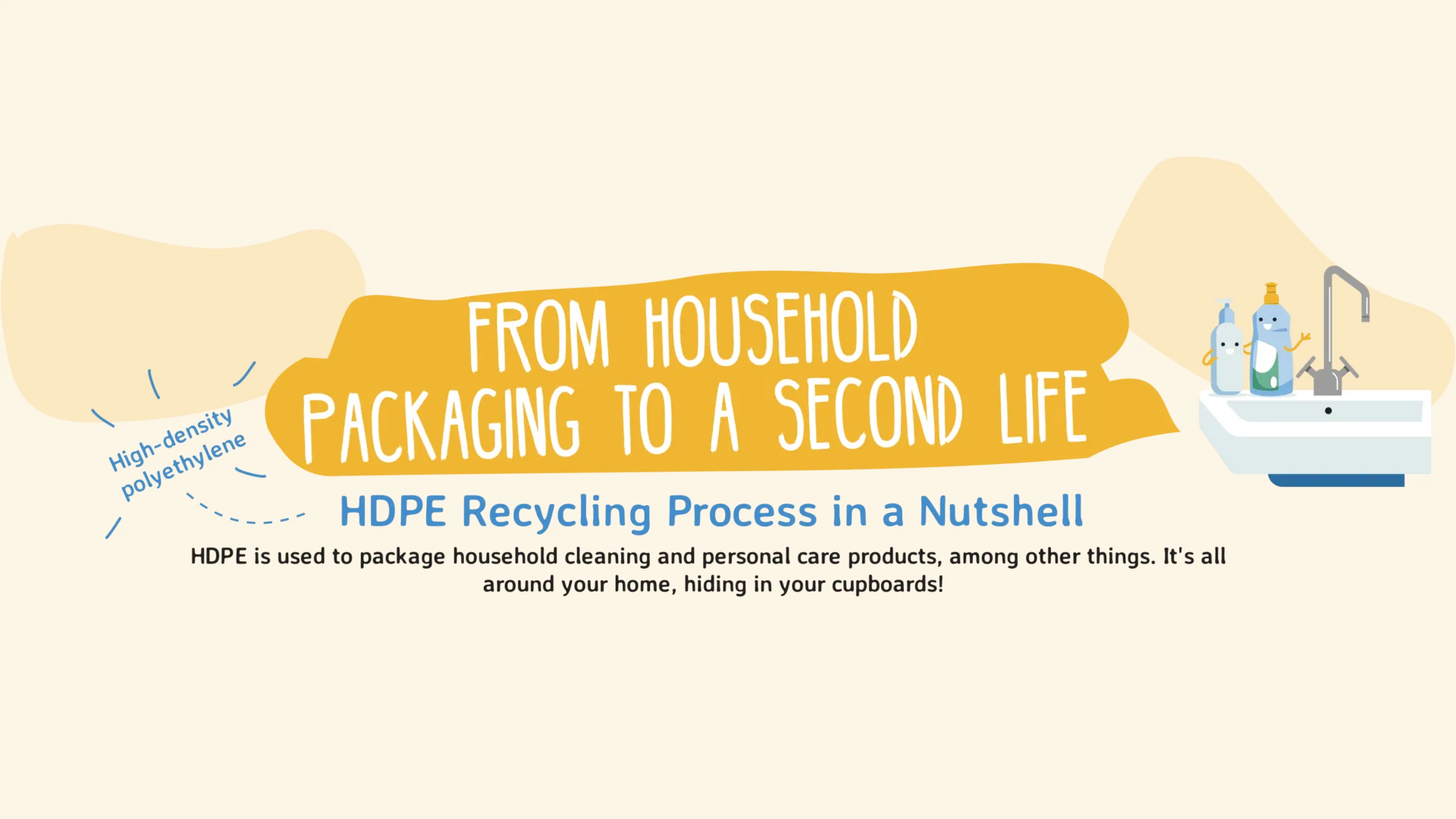The HDPE Recycling Process: A Step-by-Step Guide
From Household Packaging to a Second Life
High-density polyethylene (HDPE, recycling code #2) is a tough, versatile plastic found in milk jugs, detergent and shampoo bottles, and more. Effective HDPE recycling keeps valuable material in circulation and turns used packaging into high-quality rHDPE pellets for its next life.
HERE'S HOW HDPE GETS RECYCLED
1. COLLECTION
HDPE packaging is gathered through curbside bins and drop-off programs alongside other household recyclables. Clean, empty bottles with caps on help keep the stream higher quality and reduce contamination downstream.
2. SORTING
At the MRF, optical/NIR sorters and manual QC teams separate HDPE from PET, paper, metal, and film. HDPE is often split into natural (translucent) and colored streams—natural retains the highest value and flexibility for end uses.
3. SIZE REDUCTION
Sorted items head to a granulator/shredder, producing uniform flakes. Consistent flake size improves washing efficiency, heat transfer, and stable throughput in later extrusion.
4. WASHING & DENSITY SEPARATION
Intensive washing removes labels, glues, and residues. Flakes then enter a float–sink tank: HDPE floats, while denser plastics like PET sink. This step lifts purity and prepares flakes for pelletizing.
5. AIR ELUTRIATION
A controlled air stream removes lightweight leftovers such as paper and film from sleeves and labels, further boosting the cleanliness of the HDPE flake.
Removing label/sleeve fragments is essential—residuals can cause gels, odor, and color drift in rHDPE.
6. EXTRUSION
Clean, dry flakes are melted, finely filtered, degassed as needed, and cut into uniform pellets—high-quality rHDPE. These pellets are ready for molding or extrusion into new long-life products.
Screen changers, melt filtration, and vacuum degassing help control gels, odor, and color, improving pellet consistency.
Why HDPE Recycling Matters
- Energy & Emissions: rHDPE requires a fraction of the energy versus virgin, helping cut greenhouse gas impacts.
- Resource Conservation: Keeps valuable #2 plastic in circulation and reduces demand for fossil-based feedstocks.
- Less Landfill Volume: Bulky containers take space—recycling diverts them into productive uses.
- Durable New Uses: rHDPE is robust and versatile, suitable for many long-life applications.
Common Products from Recycled HDPE
- Non-food bottles: Detergent, household cleaners, automotive fluids.
- Pipes: Corrugated/agricultural drainage and infrastructure.
- Plastic lumber: Decking, fencing, picnic tables, benches.
- Crates, bins & pallets: Durable logistics items like milk crates and recycling bins.
Frequently Asked Questions (FAQ)
Q: What is the recycling number for HDPE?
A: HDPE is marked with the #2 code inside the recycling triangle. It's among the most widely collected plastics globally.
Q: Why is package design important for HDPE recycling?
A: Design-for-recycling matters—full-body shrink sleeves, certain adhesives, and dark/opaque colorants can hinder optical sorting or reduce rHDPE quality.
Q: Should I leave the caps on my HDPE bottles?
A: In most modern systems, yes. Caps are usually polypropylene (PP, #5). They separate from HDPE during float–sink and can be recycled too.
This entire transformation from waste to resource is powered by specialized industrial machinery. At Rumtoo Machine, we provide the high-performance HDPE recycling equipment that drives the circular economy forward.



